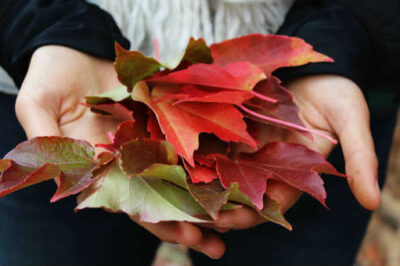Not long ago, I suggested that November could be a month of thankfulness rather than be a month with one Thanksgiving Day. Does that appeal to you?
We would be better off if we become grateful people and not just say we’re thankful. We need to recognize what and who we can be and even should be grateful for. Some people make a list. Some keep a gratitude journal. I think doing something has value. It makes gratitude more concrete and real. This may be especially true for children of all ages.
Thankfulness comes from an old Anglo-Saxon word, “thinkfulness.” As I wrote about it in Screens and Teens, “Thinking leads to thanking. I’m not talking about teens who say ‘thank you’ because their dads glare at them. I’m talking about grateful being who we are, not just what we do and say. Gratitude can be a built-in part of our identities. This is what allows us to be thankful ‘in all circumstances’ (1 Thess. 5:18).”
Let’s get our kids thinking about thankfulness. Maybe it would help focus their thoughts if we gave them categories to think about. They could make lists or just process ideas internally and then talk with you. Young children can dictate their answers to you or older siblings. I picture some of you collecting, posting, and talking about many lists. (If you do, I’d love to see pictures.)
Let’s Get Practical
Try these categories. Let me know what you think of to add. Maybe you could put each set of words on a piece of paper, assign each family member a color of pen or pencil and start writing. If you leave the papers out somewhere, hopefully each of you will stop by often as you think of things to add. Remember to discuss why you’re grateful on the nights when you make time to go through the lists.
You might want to list a few things first on each paper to provide examples. After a few days, help your children who haven’t listed much think more. Discern why they’re hesitant. What don’t they understand about gratitude?
One more comment before I give you the categories. This exercise is very self-focusing. That’s fine because the only people who will be grateful are those who know what they can be grateful for. But, we don’t want this to encourage self-centeredness or pride. You can expand the idea to be more family-centered if you’d like. For instance, you could put each person’s name on a piece of paper and have others list things about that person they’re grateful for. If they’ve already used the categories when thinking about themselves, it should be easier to think of things from the categories for you and their siblings without even listing the categories on the family pieces of paper.
Thinkfulness Categories for Thankfulness
- attitudes, actions, beliefs
- For example, among other things, I’m grateful for my positive outlook, actions I’ve taken so I will lose weight and my belief in Christ.
- people, things
- For example, among other things, I’m grateful for my brother because of his constant support, and for a new shelf a friend built for me that is allowing me to have easy access to some of my favorite books. (Look not only at what your children list, but the order in which they list everything. Are many things listed before any people? Or, are the only people they list family members? Have a conversation.)
- strengths, challenges, interests
- For example, among other things, I’m grateful for my problem-solving abilities. Your children may be surprised to find “challenges” as a category. It’s so worth thinking about these things with the big picture of life in mind. For instance, I’m grateful for each of my three knee surgeries because God used them to show me I couldn’t do everything myself. I learned to ask for help and to allow people to serve me. People were blessed and I’m a better person. I’m grateful I’m interested in our government, our country’s Christian heritage and our future as a nation.
- spiritual self, emotional self, social self, intellectual self, physical self, character self
- For example, among other things, I’m grateful for:
- Spiritual: the examples of Nehemiah and Esther from God’s Holy Word inspire me.
- Emotional: It’s been a long time since I was surprised by my quick temper.
- Social: I love introducing people to others and watching their friendships flourish.
- Intellectual: I enjoy putting ideas together in new ways.
- Physical: My back is much better.
- Character: I’ve become more teachable, especially in regard to what I need to do to lose weight.
- past, present, future
- For example, among other things, in my past, I’m grateful that my parents encouraged my brother and me to pursue our musical interests, because we still enjoy music today. In the present, I’m grateful for an excellent chiropractor who is staying knowledgeable through many training opportunities. For the future, I’m grateful for opportunities coming up that will allow me (and all of Celebrate Kids) to influence more people. (And, I can’t wait until I can fill everyone in!)
If you read something that makes sense, don’t wait to implement your ideas. Thanksgiving Day is 17 days away, but we can have a month full of thanksgiving. And starting now will make the day more meaningful than typical. We can celebrate thankfulness this month! {eoa}
Dr. Kathy Koch is the author of Screens & Teens: Connecting with Our Kids in A Wireless World.
This article originally appeared at drkathykoch.com.







Leave a Comment
You must be logged in to post a comment.